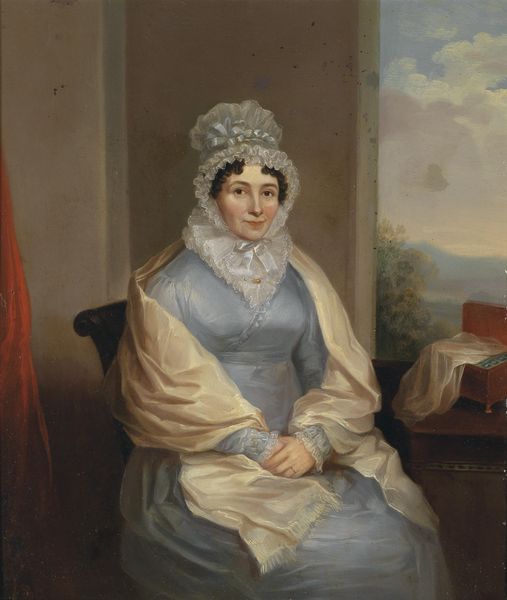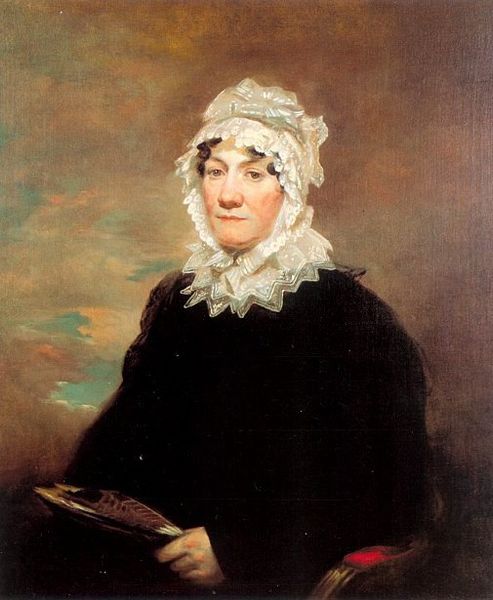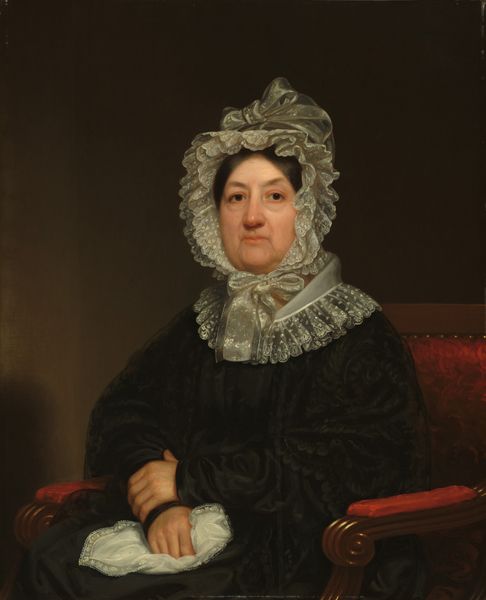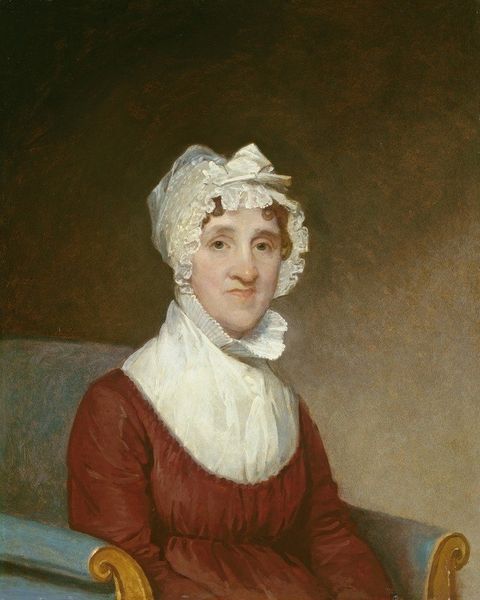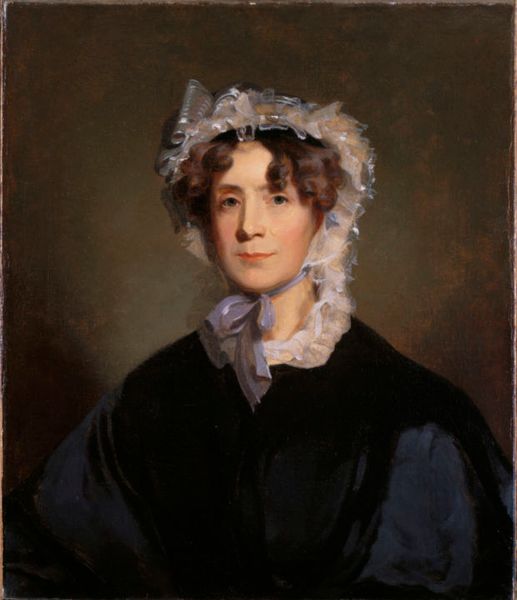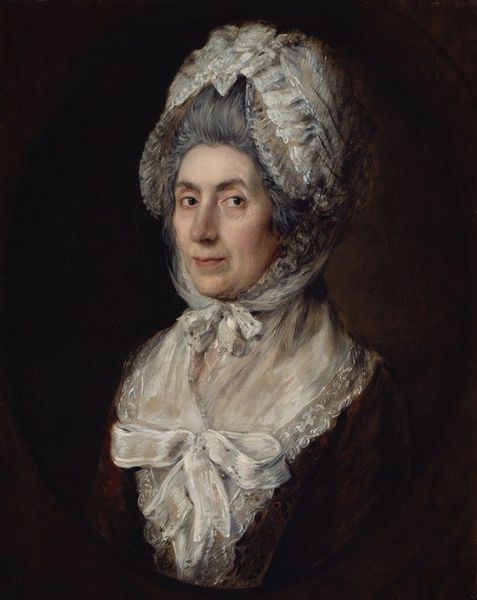
painting, oil-paint
#
portrait
#
painting
#
oil-paint
#
romanticism
#
history-painting
#
academic-art
#
realism
Copyright: Public domain
Editor: Here we have Samuel Morse’s “Portrait of Mrs. John Earnest Poyas,” painted in 1819, using oil paints. I'm really struck by how simply she's dressed, yet the textures in her cap and collar are so finely rendered. What catches your eye? Curator: Considering it was 1819, I'm looking at the material circumstances that allowed this painting to even exist. Oil paint, canvas, the sitter's garments – all products of specific industries and labor practices. Who benefited from them and at what cost? Editor: That’s interesting! I hadn't really considered it in that way before. Curator: And the "realism" – it's a style, yes, but also a product of certain artistic training, available pigments, and the patron's expectations. Were there other available or affordable means of creating such likeness, for instance, printmaking? Why wasn't she depicted via this technology? What statement does the chosen media itself make about the sitter? Editor: So, the materials themselves tell a story about class, access, and artistic choices… Curator: Exactly. Even her bonnet. That level of detail wasn't just artistic flourish; it reflects specific lacemaking techniques, trade routes, and possibly even enslaved labor in cotton production. Do you notice the inclusion of any precious jewels? How is the lack thereof another material and symbolic statement? Editor: I see what you mean! It’s easy to get lost in the image itself, but the material conditions of its creation open up a whole new perspective. Curator: It highlights art as an output of industries and people - emphasizing how making choices of particular materials influences production, labor, consumption, and culture in the historical contexts. This in turn leads us to rethink value judgements based solely on aesthetics. Editor: I will certainly consider materiality of paintings from now on! Thanks.
Comments
No comments
Be the first to comment and join the conversation on the ultimate creative platform.
